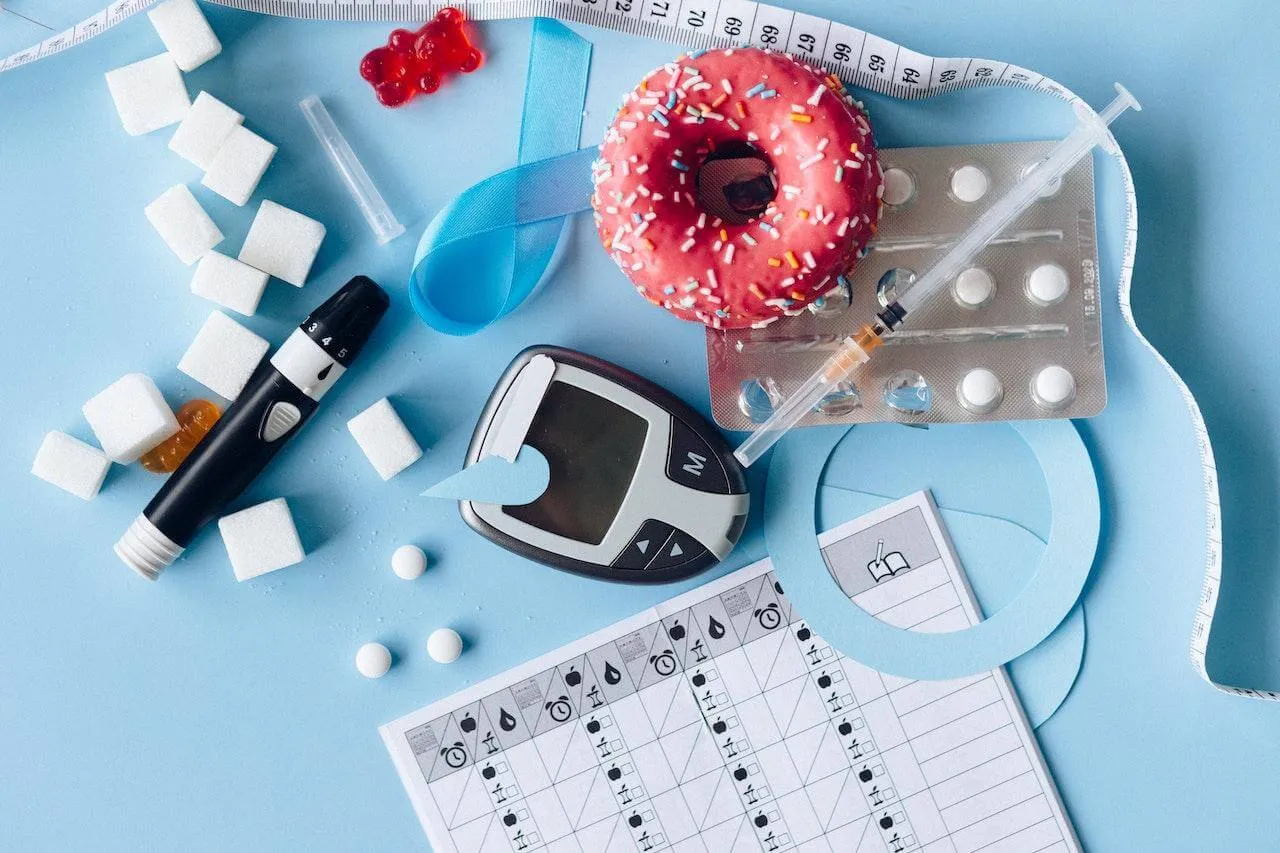Losing weight can be extremely challenging, which is why so many people are turning to prescription drugs like Ozempic to help. While Ozempic is technically FDA-approved to help adults with type 2 diabetes manage their blood sugar levels, it has also been shown to have impressive weight loss benefits. For this reason, it is often prescribed off-label to help patients with weight management. Similar to other GLP-1 medications, Ozempic is available in various dosages.
Finding the right dose can help you achieve your weight loss goal and minimize side effects. Let’s explore everything you need to know about Ozempic dosing.
{{mid-cta}}
Recap - What Is Ozempic and How Does It Work?
Ozempic (also known as semaglutide) was created by Novo Nordisk and falls under a class of drugs called glucagon-like-peptide-1 receptor agonists (or GLP-1 receptor agonists). This medication binds to the GLP-1 receptor cells in your body and lowers blood glucose in the following ways:
- It causes your pancreas to release more insulin when your blood sugar is high.
- It slows down digestion in the stomach, so food is absorbed more slowly. This makes you feel fuller longer and helps reduce overall calorie intake.
- It prevents your liver from releasing glucose into the bloodstream.
Although Ozempic is not approved by the Food and Drug Administration as a weight loss drug, in clinical trials, patients with type 2 diabetes lost up to 14 pounds while taking this medication. When compared head to head, Ozempic was shown to be more effective in supporting weight loss compared to similar drugs like Trulicity.1 In addition to weight loss, Ozempic has also been shown to reduce the risk of cardiovascular events (like heart attacks) in patients who have been diagnosed with heart disease.2
Novo Nordisk also created Wegovy, a drug with the same active ingredient as Ozempic but specifically intended for patients with obesity.
What Is the Typical Ozempic Dosing for Weight Loss?

Determining the proper dosing regimen for semaglutide is essential for maximizing its weight loss benefits. Administering the correct dose also helps mitigate common side effects like nausea and constipation and more serious side effects like pancreatitis and thyroid tumors. The dosage is prescribed by your healthcare provider and is based primarily on your medical history and your bloodwork. In general, someone taking Ozempic injections for the first time will be prescribed the smallest effective dosage possible, and the dosage can slowly increase from there to attain the desired results.
There is no one specific “right” Ozempic dose that is suitable for everyone. Your doctor will consider multiple things and assess your current medical conditions to prescribe the most appropriate dose of semaglutide for you. That being said, the typical dosing schedule is as follows:
- You will be prescribed an initial dose of 0.25mg once per week for four weeks. This will help your body slowly adjust to the medication.
- Your healthcare professional will then increase your dosage to 0.5mg once per week for another four weeks. If this dosage helps control your blood sugar, you will likely stay at this dose.
- If additional blood sugar control is required, your doctor may change your prescription to a 1mg dose once per week.
- In some cases, your doctor may move you to the 2mg dose once per week, the maximum dose of Ozempic.
Ozempic is designed for long-term use, and it’s possible to move to a lower or higher dose over time. The dosing regimen can differ based on an individual’s health factors, and each patient may have a different response to the treatment.
This is why it is important to take Ozempic as directed and work closely with your healthcare provider. Talking openly to your doctor about your weight loss goals and any side effects you experience will help improve the safety and efficacy of this prescription medication.
<div class="pro-tip"><strong>Also Read: </strong><a href=what-is-glp-1>Glp-1 Agonists: What You Need to Know</a>.</div>
Doses in an Ozempic Pen
Ozempic is an injectable medication that is administered subcutaneously through a pen. The most common injection sites are the upper arm, abdomen, or thigh. Pens are multi-dose (as opposed to single-use) and come in various doses, all represented by different colors. Each pen contains four doses. Regardless of the type of pen you use, Ozempic should be administered once weekly on the same day each week. It can be taken at any time of the day, with or without meals.2
- Red Pens: This is the lowest dose, and where most patients start. The red pens contain 2mg of semaglutide and can deliver either 0.25mg or 0.5mg injections. Many patients stay at the 0.5mg dose for the duration they’re on the medication.
- Blue Pens: If your healthcare provider determines you need to increase your dosage, you will switch to the blue pen. This pen contains 4mg of semaglutide and delivers 1mg per injection.
- Yellow Pens: The yellow pens are the highest dose of Ozempic and are less likely to be used. These pens contain a total of 8mg of semaglutide, which is delivered in 2mg injections.
Ozempic Dosing Schedule
Sticking to a regular dosing schedule is crucial for maximizing the benefits of this weight-loss medication. While the frequency of the injections is the same for all patients, the length of Ozempic treatment will vary depending on your individual health concerns and goals. Talk to your doctor if you have concerns about the length of time you’ll be on semaglutide.
Although your healthcare provider will instruct you on how much you should be injecting per week, the following is a common dosing schedule:
- First Month: Injecting 0.25mg once per week.
- Second Month: Injecting 0.5mg once per week. Many patients remain at this dose for the duration of their treatment.
- Third Month: Increase the dosage to 1mg once per week (only if necessary and recommended by your healthcare provider).
- Fourth Month: Increase the dose to 2mg once per week (you and your healthcare provider should closely monitor this).
How to Increase Your Ozempic Dosage
Your dosage will only increase if your healthcare provider believes that it’s necessary to do so. If you’re not seeing the results you expected on your initial dose, increasing the dosage may help you achieve your weight loss goals more quickly. Remembering that this medication should be used alongside healthy lifestyle changes like a nutrient-dense diet and regular exercise routine is important. The speed at which patients see results can vary, and it’s normal not to lose weight right away. Your body may need time to adjust, regardless of how soon or by how much you increase your dosage.
Each Ozempic pen provides you with four pre-measured doses. The first pen comes with doses of 0.25mg and 0.5mg. After the first month, you can work with your healthcare provider to determine if a higher dose is right for you.
What Is the Maximum Dose of Ozempic for Weight Loss?
The maximum available dose for Ozempic is 2mg. This dose can only be achieved after several months of gradual increases. In many cases, this high dose isn’t necessary, and patients are able to lose weight with the 1mg per week dose. It is important to remember that the maximum dose varies based on each patient’s health history and should always be determined by your doctor.
Tips to Stay on Track With Your Ozempic Doses

As with any prescription medication, adherence is key. By taking this GLP-1 drug exactly as your doctor has prescribed, you can maximize the benefits and minimize the side effects and safety concerns. If you miss a dose, you should administer Ozempic within five days after the missed dose as soon as possible. If you go beyond 5 days, you should skip the missed dose and take the next dose on the regularly scheduled day.
Creating a routine and keeping up with the same weekly dosing schedule will make you less likely to forget an injection. Here are some tips for staying on track when using Ozempic:
- Set Reminders for Your Doses
Set a weekly alarm on your phone, or make a weekly appointment in your email calendar.
- Arrange Your Dosing With Other Important Activities
Tying your weekly injection to another habit you already have in place will help you stay on track. Example - If you have coffee at the same time every morning, try taking Ozempic immediately after.
- Download an App That Keeps Track of Your Doses
Since we’re never without our phones, medication tracking apps can help ensure you never miss a dose. These are particularly useful if you take more than one drug or supplement.
Using a CGM with Signos: Real-Time Data, Backed by AI
Signos pairs a real-time glucose biosensor with AI trained on tens of millions of data points to deliver personalized, science-backed guidance for weight management and health. See exactly how your body responds, and take action.
Learn how it works. Ready to get started? Join now.




.svg)










.svg)
.svg)
.svg)
.svg)
.svg)
.svg)
.svg)
